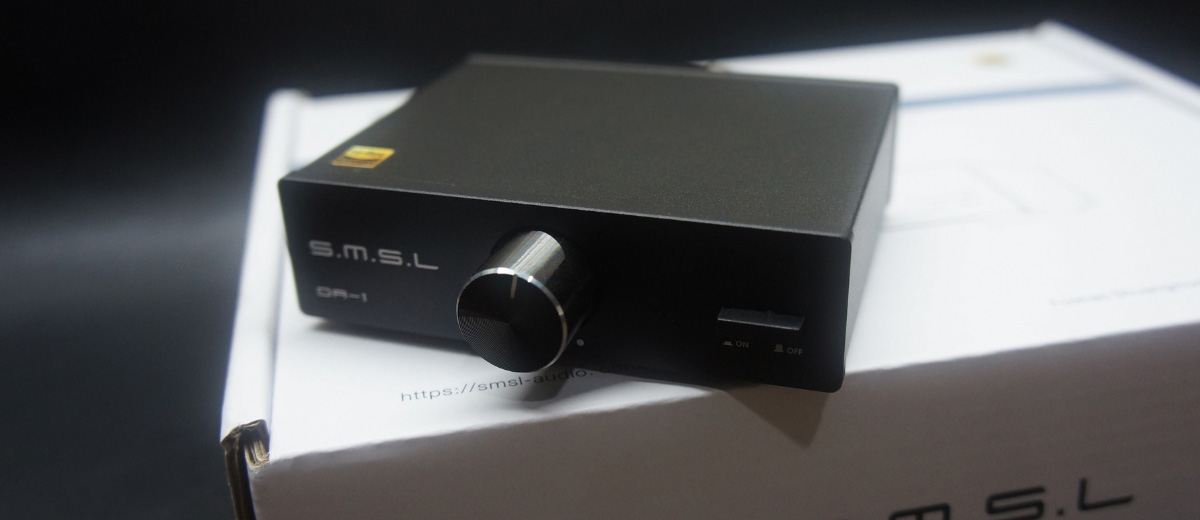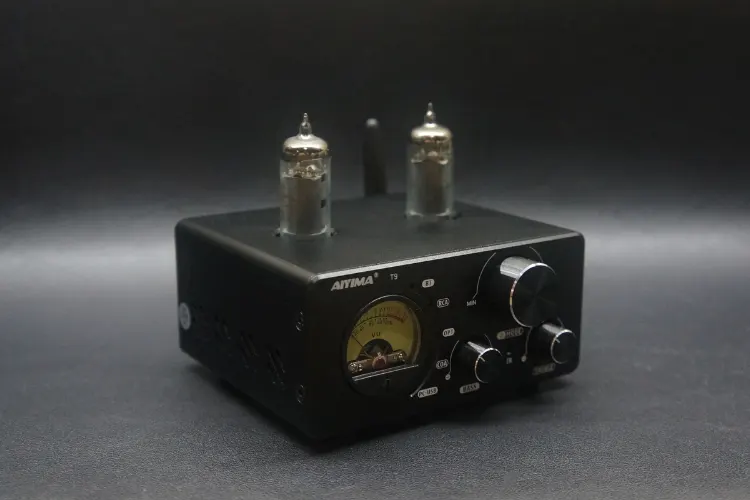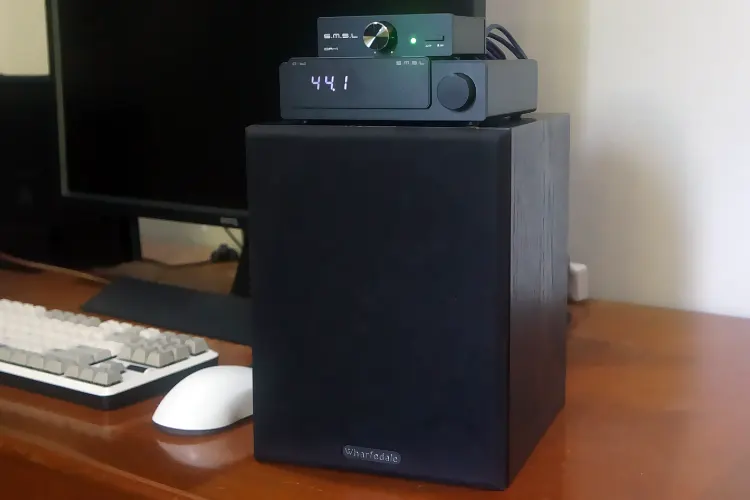Synergy
As I mentioned in the previous portion of the review, the difference between a reasonable near-field and far-field listening level on the DA-1 is merely 30 degrees on its volume knob.
This need for more granular volume control led me to pair the DA-1 with the D-6S, a DAC with volume control via its knob and remote.
Having experienced the Wharfedale Diamond III for several years now, I am familiar with the naturally warm timber presented by these vintage monitors.
The DA-1 did a good job preserving the default warm tonality while presenting it in a more dynamic manner that gave a more “decompressed” sound compared to other amplifiers I’ve tried.
The tandem of the D-6s and the DA-1 consistently improved overall dynamics, without coloring the frequency response. Even when isolating the timber of both products on their own, they each have a neutral and transparent tonality, and pairing them together does nothing to change this.
The improved dynamics were most obvious in complex jazz mixes wherein fast-paced hi-hats coincided with repetitive thumping bass.
With other combinations I’ve tried, the sheer volume difference between these two different sounds was not nearly as wide as the one exhibited by the D-6S and DA-1 pairing.
Select Comparisons
Aiyima T9
Technical
Despite the Aiyima T9 being a Bluetooth DAC/AMP, all listening comparisons were done by feeding both the DA-1 and T9 an analog signal from the SMSL D-6S to the RCA input of each unit.
The SMSL DA-1 uses an American Texas Instruments TPA3118 chip, which delivers a maximum output power of 65W per channel at 4Ω.
It has a POP sound control circuit that ensures a smooth and pop-free start. The DA-1 has a total harmonic distortion of 0.07%, a signal-to-noise ratio of ≥98db, and a frequency response of 20-20Khz.
The Aiyima T9 uses a TPA3250 chip, which delivers a maximum output power of 100W per channel at 4 ohms, and 50W per channel at 8 ohms.
It has a PC-USB input that supports up to 24BIT/192hz sampling rate, and a Bluetooth 5.0 input that supports aptX and aptX HD codecs. The T9 uses JAN5725 tubes, which can be replaced with other compatible tubes.
Design
The SMSL DA-1 has a simple and elegant design, with a black metal chassis and front panel. The front panel has a power button, a volume knob with a smooth and precise feel, and an LED indicator.
This is a very compact unit, measuring only 96×30.5×102mm and weighing 230g. It can easily fit on any desktop or shelf without taking up much space.
The Aiyima T9 has a more flashy “retro-inspired design when compared to the DA-1”. It makes use of a black metal chassis and front panel, housing a power button, a volume knob, a VU meter, and treble and bass knobs.
Its volume knob has a clicky and coarse feel, and the VU meter shows the output level with a pointer and a warm light. The T9 is slightly larger and heavier than the DA-1, measuring 115*98*54mm and weighing 0.63kg.
Both the DA-1 and T9 can still fit on most desktops or shelves, but the T9 tends to attract more attention due to the two glowing tubes peeking through the top of the unit, and the glowing analog VU meter in front.
Performance
The SMSL DA-1 is a neutral and transparent amplifier that does not color the sound, while the Aiyima T9 has a slightly warm and smooth sound signature.
The DA-1 reproduces sub-bass hits with more control and satisfying tightness when compared to the T9. However, the T9 does a better job of reproducing thick bass lines and atmospheric background groans in a more pleasurable way. Which is more preferable ultimately depends on the listener.
For modern Pop and Hip Hop music, I preferred the DA-1, however, I found myself gravitating back to the T9 for older jazz, funk, and soul tracks.
The mid-range performance of the DA-1 was more resolving across the board, especially when it came to female vocals and string instruments.
Compared to the T9, the DA-1 was able to play these back with a better sense of emotion and better fidelity. The only part of the mid-range where the T9 edges out the DA-1 is on the lower mid-range, where male vocals were reproduced with a more authoritative feeling.
This, however, did come at the expense of some bass bleed. I did find myself increasing the treble of the T9 a bit to reach a tonality that I found more pleasing.
The treble of the DA-1 was better than the T9 across the board. The DA-1 was able to play back chimes and cymbals with a better sense of sparkle and a better sense of imaging. The sheer resolution difference of treble instruments on the DA-1 made them easier to identify within space.
Our Verdict
The SMSL DA-1 is a compact 65W class D amplifier with good dynamics and power headroom for bookshelf speakers at a sub-$50 price point. This places it in the rarefied air of not only being high value but being serviceably powerful and hyper-compact as well.
For novice audiophiles, or audiophiles with AMP/DAC setups more tailored towards headphones and IEMs, the DA-1 and a pair of bookshelf speakers could very well be a gateway into the 2-channel sphere.
It is by no means perfect. It truly is as barebone as could be, and the hissing smack dab in the middle of the volume knob is quite baffling.
Despite this, one cannot deny that it’s a decent way of driving bookshelf speakers without significant monetary or spatial commitment.
SMSL DA-1 Technical Specifications
- Output Power: 65W*2 (4Ω)
- Frequency Response: 20Hz-20kHz
- THD+N: 0.03%
- Channel Separation: 98dB(1kHz)
- Input Sensitivity: 530mVms
- SNR: 102dB
- Power Consumption: 36W
- Weight: 0.23kg




